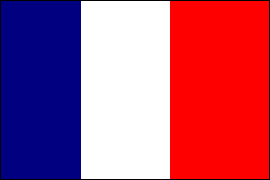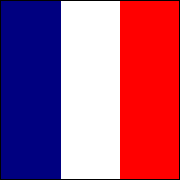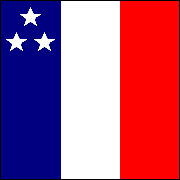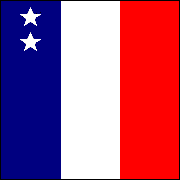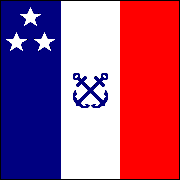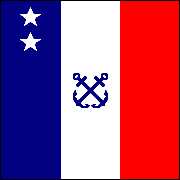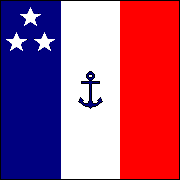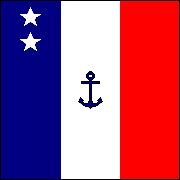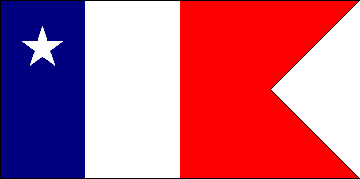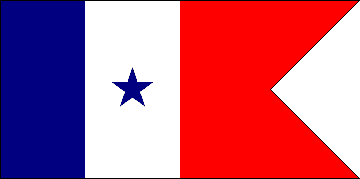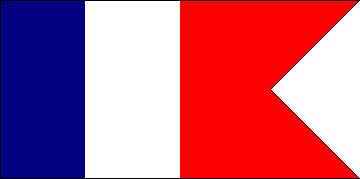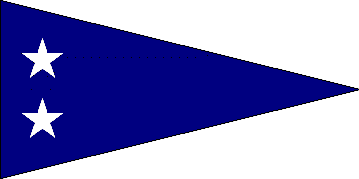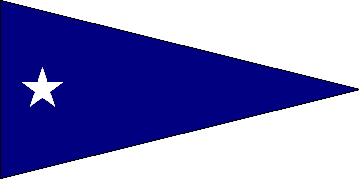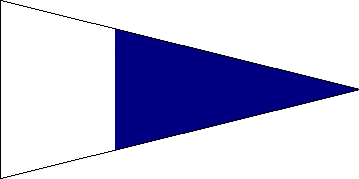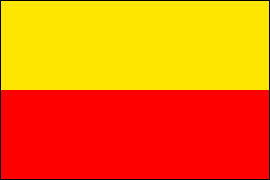FRENCH REPUBLIC
NAVAL ENSIGNS & FLAGS • ERA OF THE GREAT WAR
The outbreak of war in 1914 came at an awkward time for the French Navy (Marine nationale). After decades of confusion and controversy regarding the size, composition and role of the fleet, a start had finally been made on naval modernization. The 1912 Program envisioned the creation by 1920 of a modern battle fleet: 28 dreadnought battleships, ten light cruisers, fifty-two destroyers and ninety submarines, all of the most advanced design. But the German occupation of some of France's most important industrial areas and the competing demands of the Army for manpower and materials caused this program to be suspended for the duration of the war and the Navy was forced to make do with what it had. The first dreadnought battleships were just entering service and there was a large contingent of pre-dreadnought capital ships and armored cruisers. Some of the latter were reasonably modern but others were not only old but in poor material condition. There were no modern light cruisers of the type that the British and German navies possessed in large numbers. Flotilla craft (destroyers and torpedo boats) were also inadequate, most being too small for anything other than coastal operations, and many of the submarines on hand were of limited operational value.
During the war the Navy's principal area of operations was the Mediterranean. The main battle fleet (Armee navale), consisting of the dreadnoughts and the most modern pre-dreadnoughts, was based there. Its initial task was to cover the transfer of troops from North Africa to metropolitan France. Thereafter it stood by in readiness to parry any attempt by the Austro-Hungarian battle fleet to break out of the Adriatic Sea. This freed some older battleships and armored cruisers for the ill-fated Dardanelles campaign (1915) and subsequent operations in the eastern Mediterranean. In the English Channel and the Atlantic the Navy's tasks included commerce protection and the U-boat campaign.
The blue-white-red Tricolor, first adopted as the national flag of France in 1794, served as the French Republic's naval ensign and jack. Tricolors for use at sea had stripes of unequal width (30:33:37 proportions); this to make them look equal in width when viewed from a distance at sea. Most naval appointment and rank flags were square versions of the Tricolor. At the time the highest naval rank was vice-admiral, with one officer of that rank appointed as fleet commander. Metropolitan France and the overseas empire were divided into maritime prefectures, each with a vice-admiral in command. If so appointed a vice admiral added crossed anchors to his flag, as did a rear-admiral temporarily acting as a maritime prefect. Flag officers charged with special commissions, e.g. representing France to allied navies, added a vertical anchor to their rank flags. When aboard ship the Minister of Marine flew a plain square Tricolor. The commission pennant was striped like the Tricolor.
A captain appointed to an independent command—essentially a commodore—flew as his broad pennant a forked version of the Tricolor with a white star in the upper hoist. If holding a subordinate command within a larger force, a captain flew the same with the star on the white stripe. A captain as senior officer, i.e. in temporary command, flew the forked Tricolor with no star. The senior officer's flag for lower ranks was plain blue. Officers commanding flotillas flew triangular blue pennants with one or two white stars. Harbor guardships flew a pennant striped white and blue. The submarine signal, a flag horizontally striped yellow and red, was flown by shore stations when friendly submarines were operating in the area, at the bow by surface ships participating in exercises with submarines and at the bow by submarines when underway on the surface during exercises.
